What does Brown's honeysuckle look like and how to grow it?
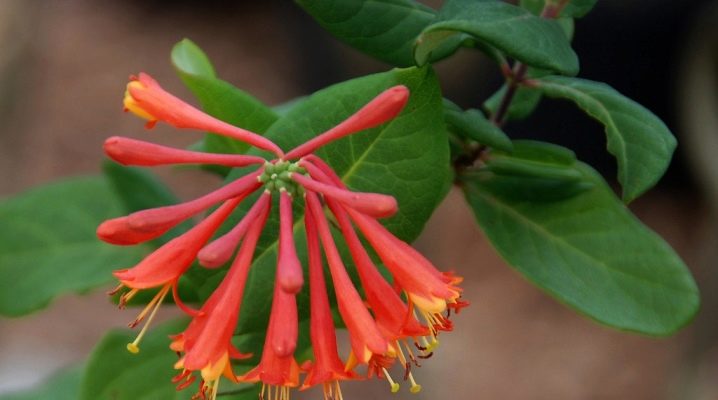
Shrubs in modern landscape design are used quite actively. Honeysuckle is one of the most aesthetic varieties, among them there are both edible and poisonous fruits. Brown's honeysuckle refers to such a purely decorative type of shrub. Due to its spectacular appearance and unpretentiousness, it is in demand among gardeners and landscape designers of all levels.
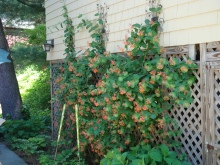
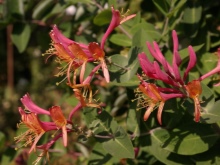
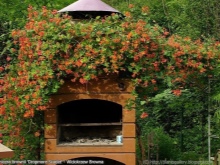
general description
Brown's honeysuckle is a hybrid ornamental shrub species. It was bred by crossing the rough and evergreen species. As a result, several aesthetic varieties have appeared, which are actively used in landscape design of various levels - from ordinary sites to park compositions.
By type, this plant belongs to climbing shrubs.
Vine-shaped shoots are green, which gradually turns brown, with a tint of purple. The maximum height is 2.5 m.
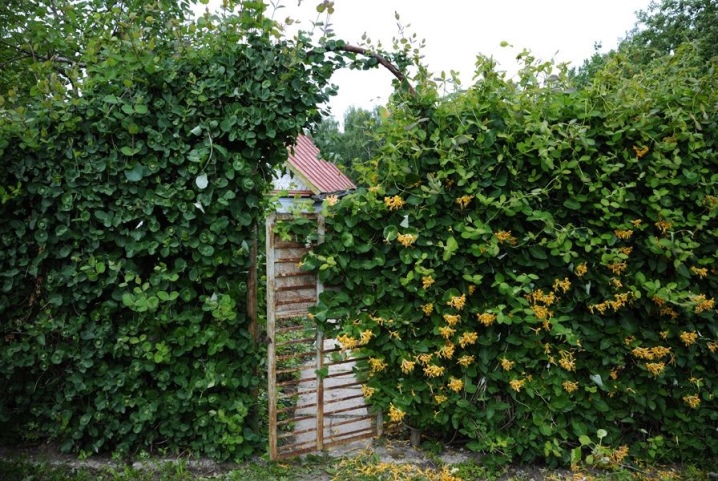
The foliage is leathery, dense, oval with an elongation and a rounded tip, the petioles are short. The leaves are green, dark, glaucous on the reverse side, often grow together into one leaf like a corolla. Strong roots of a tree-like type with branching. Flowering like tubular bells, flowers are large, the diameter can reach 6 cm.The color may differ depending on the variety: red, yellow and orange palettes are found most often.
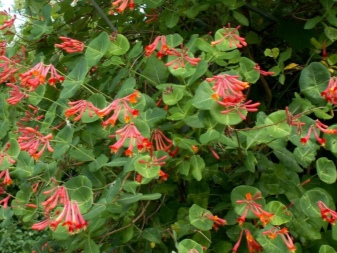
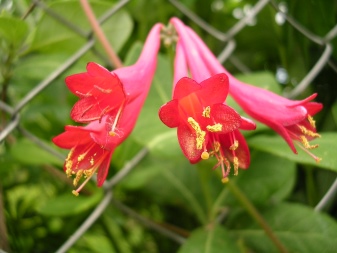
Flowers are collected in bunches of several pieces, the beginning of appearance is June, the shrub blooms for a long time. Then fruits are formed - round red berries, which are not eaten.
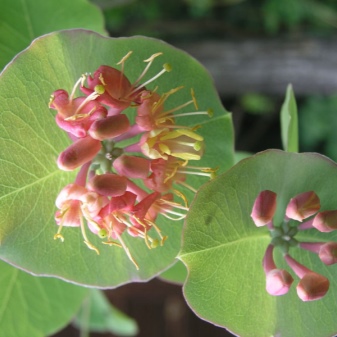

Popular varieties
Breeders have developed several spectacular varieties within this variety of honeysuckle. Among them, the following are most common.
Blanche Sandman:
- liana of an evergreen type, stretching up to 3.5 m;
- shoots look powerful, are red, curly, with abundant foliage;
- shoots can grow up to 1 m per year;
- foliage is oval, green;
- this variety blooms in early summer, in July this period ends;
- flowers are large, beautiful crimson-purple color, yellowish inside;
- ideal for hedges, decorating arches, facades, fences.
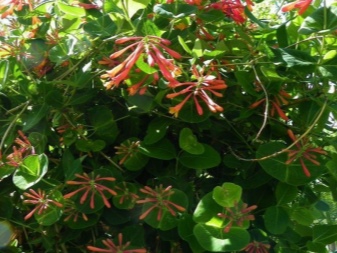
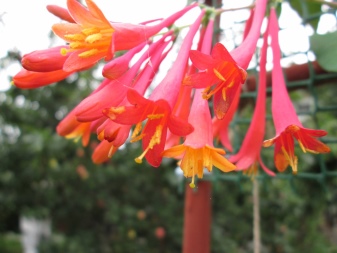
"Fuchsia":
- this type is well suited for vertical decor, and any elements of the park and garden can be decorated this way;
- also honeysuckle of this variety is optimal for decorating fences, walls, fences;
- in growth the bush stretches up to 2 m;
- foliage grows together, has a dark color and dense structure;
- flowers appear in early summer, fall off in a month;
- the color of the petals is bright, pink-crimson with an orange core;
- flowers are large;
- the variety is extremely unpretentious, resistant to frost.
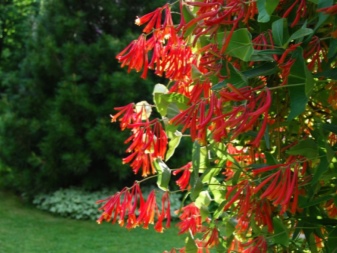
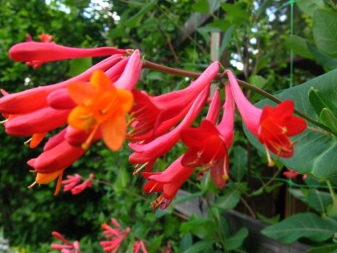
Golden Trumpet:
- climbing shrub, growing up to 3 m;
- flowers are bright yellow-red, appear in the first month of summer;
- from July to early autumn, the bush is decorated with beautiful fruits of a crimson tone;
- suitable for different types of design.
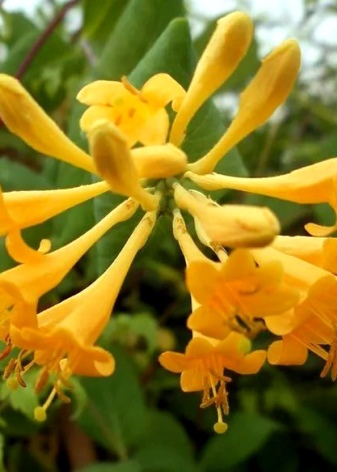
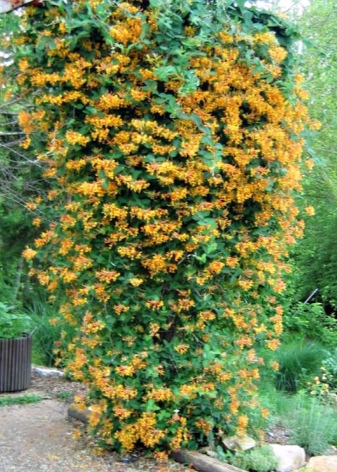
Dropmore Scarlet:
- a Canadian variety that has long established itself among gardeners around the world;
- semi-evergreen shrub, twisting shoots, growing up to 2 m;
- foliage is wide, grows together, has a green color with a blue bottom;
- the flowering period is long - from early summer to autumn;
- flowers are large, about 5 cm in diameter;
- flower shape - like a tubular bell, red-orange color;
- in August, the first red fruits appear;
- it has good immunity and resistance to frost.

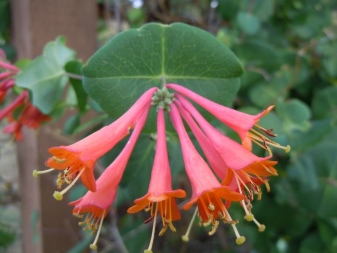
Landing
This type of honeysuckle is unpretentious, but when planting, a number of elementary rules should be observed.
Timing
The optimal period for planting this species of honeysuckle is autumn, that is, when the bush is dormant, the growing season is over. But before the frost, you need to have time to plant it in a month. This time is enough for high-quality rooting.
It is better if the seedling is in a special container with closed roots, then the plant can be planted at any time of the season.
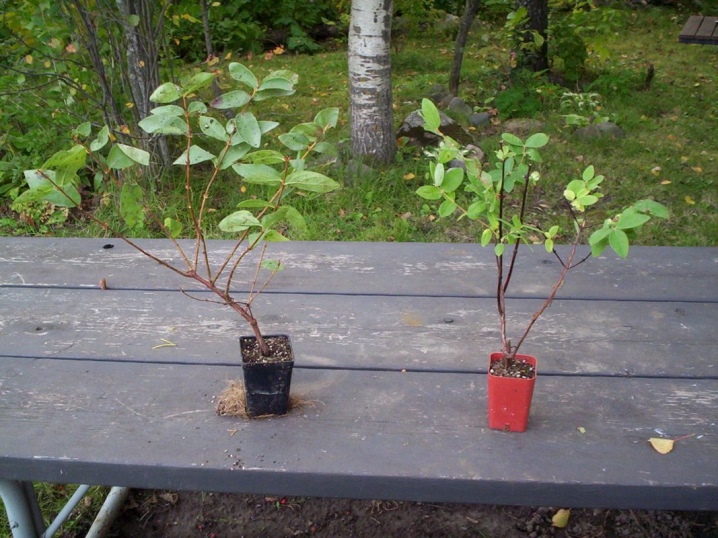
Site selection and preparation
Honeysuckle of this species calmly tolerates various climatic deviations and unfavorable soils. But if there are no minimum favorable conditions for growth, the shrub will develop more modestly. Best of all, this representative of the flora feels at lighted areas, although partial shade is not contraindicated for him. For example, he is actively planted along the fences - he grows well there.
As for the soil, it should be loose, with good air exchange, and loam, sandy loam soil is optimal in composition. Soil neutrality and mild acidity will be a plus. On clayey, swampy soils, sandstone, honeysuckle grows worse. Since the plant is not self-pollinating, it is important to plant other varieties nearby for cross-pollination.
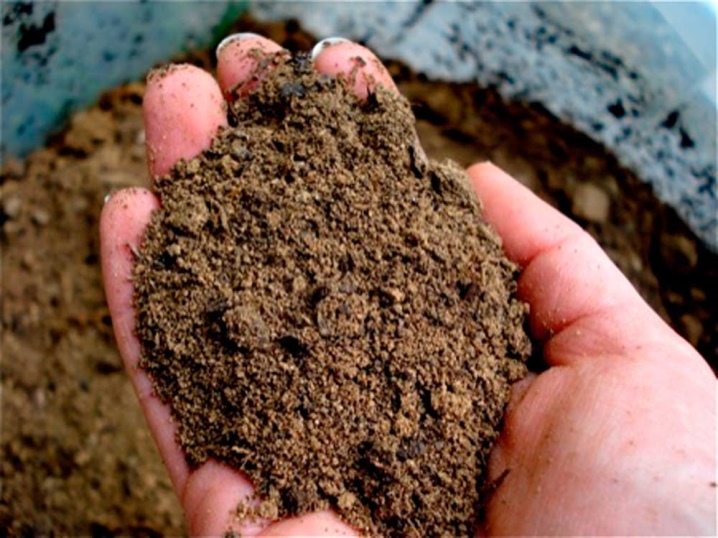
Technology
The soil is not specially prepared in advance; planting pits are formed immediately before the procedure. The depth and width are matched to the seedling, or rather, the size of its root system. If your seedling is five years old or older, you need to take care of creating a meter deep. Young individuals sit well in small holes - 30 cm.
In case the soil is poor and not suitable for Brown honeysuckle, you need to create a nutritious soil mixture.
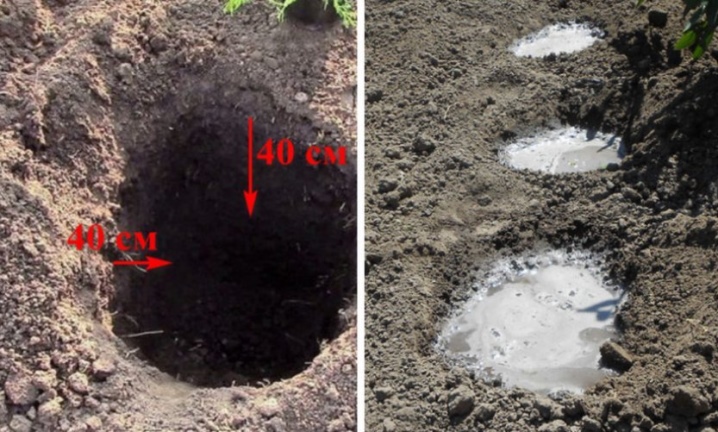
To do this, combine part of the sand, part of the peat and three parts of the sod-type land. An additive in the form of wood ash, a potassium-phosphate composition will also be useful. The bottom of the pit is covered with a drainage layer of 5 cm or more, you can use fine gravel, broken brick, expanded clay, gravel. Then a layer of nutritious soil is laid, on which the seedling is placed. The roots are carefully straightened, sprinkled with soil and tamped, there should be no voids.
The root collar remains at the level of the ground surface. The area is then watered and mulched with humus or peat. It is important to choose the correct distance between the bushes, at least 1.8 m. Although if the goal is a dense dense hedge, the indentation can be slightly reduced - up to 1.5 meters.
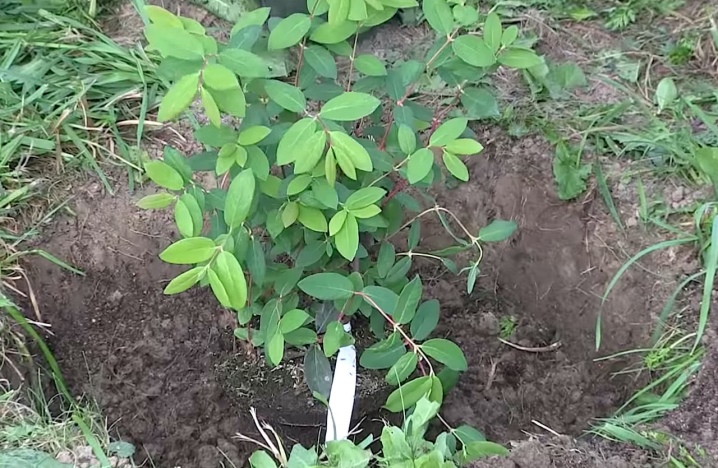
Care
The honeysuckle of this variety is not particularly sensitive to agricultural technology, there is nothing difficult to care for. However, simple, mandatory procedures should be done on time. Brown's species does not tolerate a long drought, so it is important not to forget about high-quality watering.
-
Moisturizing. Immediately after planting, the seedlings are watered abundantly several times, so the roots adapt faster. Then watering is carried out taking into account the weather, if it is very hot, then every night, so the moisture evaporates more slowly. 10 liters of water is poured onto one tree. Sprinkling can be done periodically, Brown's honeysuckle is very responsive to this procedure. It is also held in the evenings.
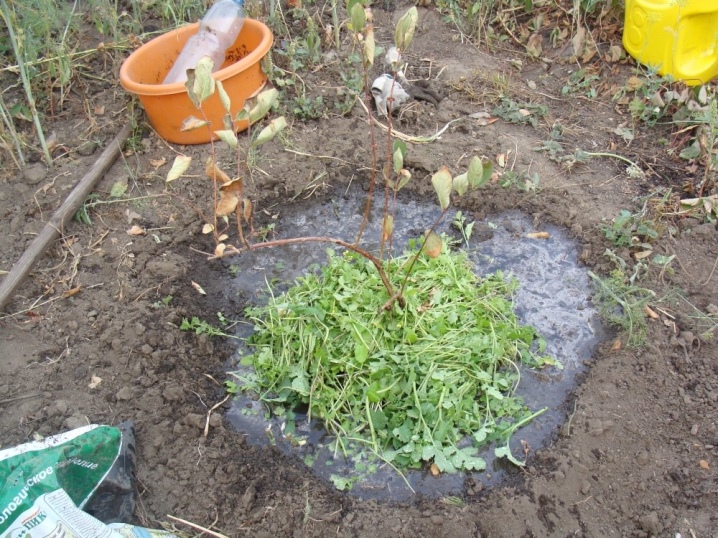
-
Top dressing. The first feeding is carried out during planting, this amount of fertilization is sufficient for the tree in the first years of growth. But after 2-3 years, the shrub needs to be fertilized, since flowering and fruiting significantly depletes the soil. Top dressing of an adult plant is carried out several times per season. In early spring, formulations with nitrogen are introduced; in the summer, at the end of flowering, organic matter will come in handy. At the end of fruiting in the fall, the plant needs potassium-phosphorus preparations, complex compositions. You can safely apply complex fertilizers for flowering shrubs, once a season this is enough.
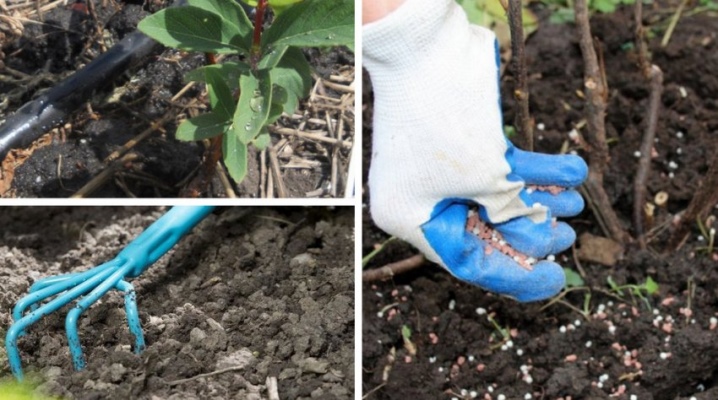
-
Pruning. In the first year or two, the vines are not pruned, since they need to be extended in length. At this time, you only need to remove dry and damaged branches.When the plant reaches the desired height, formative pruning can be done, not just sanitary pruning. The upper shoots are cut off, the side shoots are bred to the sides using walls, trellises, fences, and so on. Honeysuckle should be pruned in the spring for sanitary and anti-aging purposes. The latter become relevant when the shrub reaches 6 years of age. Old shoots are cut off, young ones are encouraged to grow. The optimal time for pruning is early spring, when the juices are not yet moving in the plants. Autumn pruning is carried out at the end of all vegetation processes.
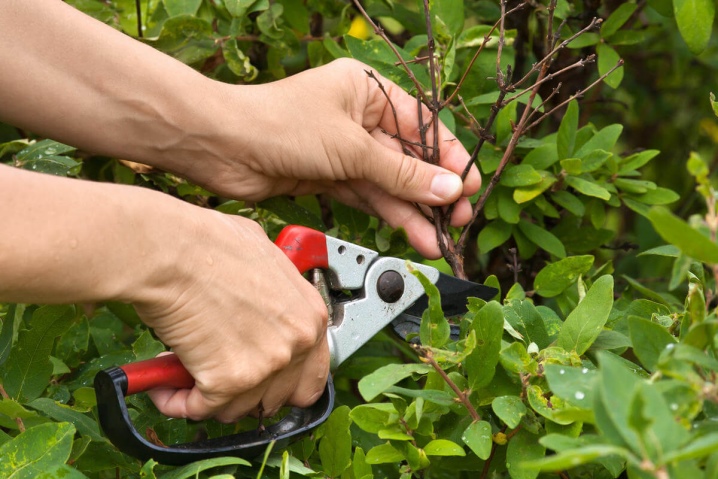
- Preparing for winter. The plant tolerates frosts well down to minus 20 C; in regions with such a climate, it is not worth covering it for the winter. It is enough to mulch the root zone. In regions with a harsh climate, shoots are removed from the fortification, placed on mulch soil and covered with spruce branches, leaves, and hay.
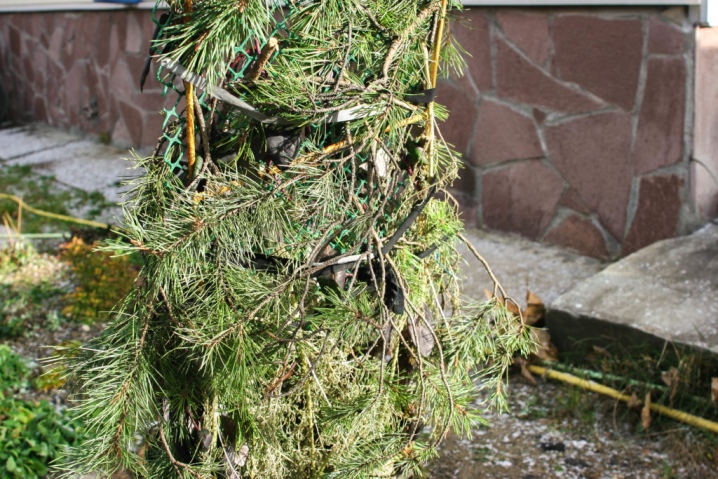
Reproduction
This type of honeysuckle reproduces by seed, vegetative way. Each has its own characteristics.
Seed method:
- seeds can be collected independently from ripe fruits in mid-autumn;
- berries are wiped with a sieve, seeds are extracted that need to be stratified;
- sowing is carried out in the spring, when the snow melts and a positive temperature is established;
- for sowing, furrows are formed in which seeds are placed and sprinkled with soil, but not too thick;
- at the beginning of autumn, the first shoots may appear;
- if you want to speed up the procedure, germination must be carried out at home in containers like greenhouses, and then planted in open ground.
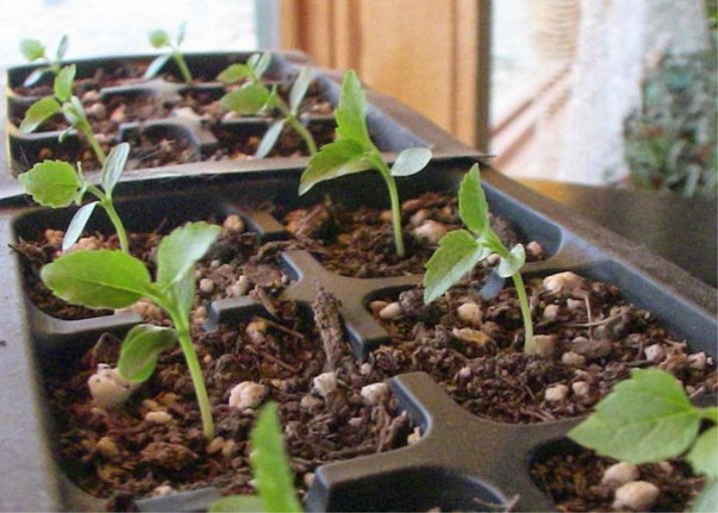
Cutting method:
- this method is used more often, it is simpler, the efficiency is higher;
- optimal cuttings are in winter, when wood cuttings take root in autumn or early spring;
- in the summer, you can also cut a shrub using green cuttings cut from a one-year-old plant;
- it is very important to regularly and abundantly moisten the cuttings so that rooting takes place more actively, after which they are planted in a permanent place.
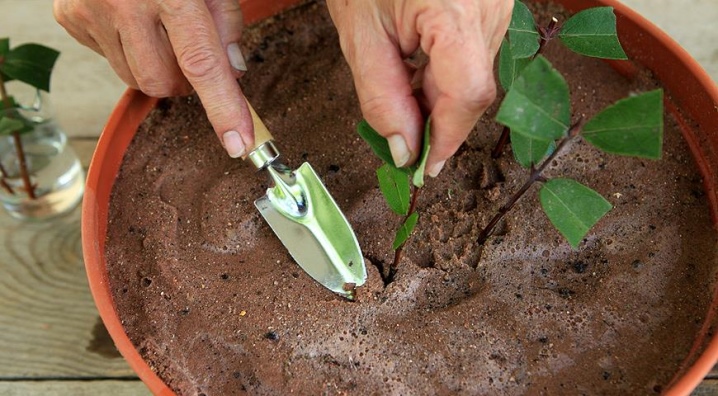
Division of the bush:
- if the bush has grown powerfully, you can dig it up and divide it so that each part has roots and healthy shoots;
- then the parts are seated independently in separate holes.
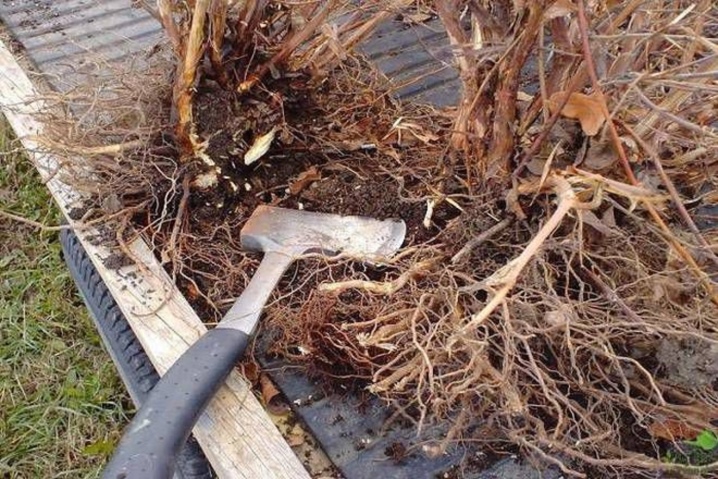
Bushes obtained by seed or cuttings bloom in the third or fourth year. Grown by the method of dividing the bush - into the first or second.
Diseases and pests
The immune system of this type of honeysuckle is quite strong, so diseases and pests attack it infrequently. But under unfavorable conditions, the plant can be severely affected by the fungus and insects that carry infections.
-
Powdery mildew. A fungal-type disease that will dry out and die if the disease is not prevented. Sick shoots are cut off and the bush is treated with special preparations.

-
Brown spotting. Another harmful fungus that affects foliage, which turns brown and dries. It is important to remove diseased foliage, including fallen leaves, and burn it. The plant is treated with fungicidal preparations.

-
Ascochitis. Spotting of this type is also harmful to foliage and is of fungal origin. It is treated with fungicides, while it is important to remove all affected areas and destroy.
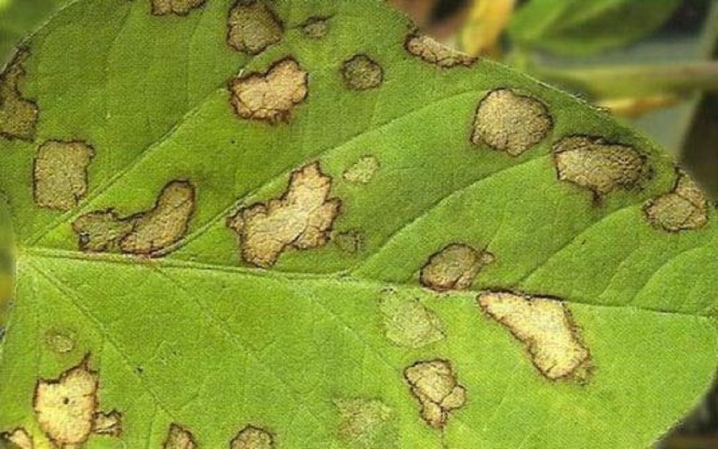
-
Mottling. A viral disease that spoils the decorative properties of the bush is carried by nematodes. It is necessary not only to remove everything damaged from the garden, but also to fertilize with potassium. If the disease has developed, it will be impossible to get rid of it, the bush is dug up and burned.
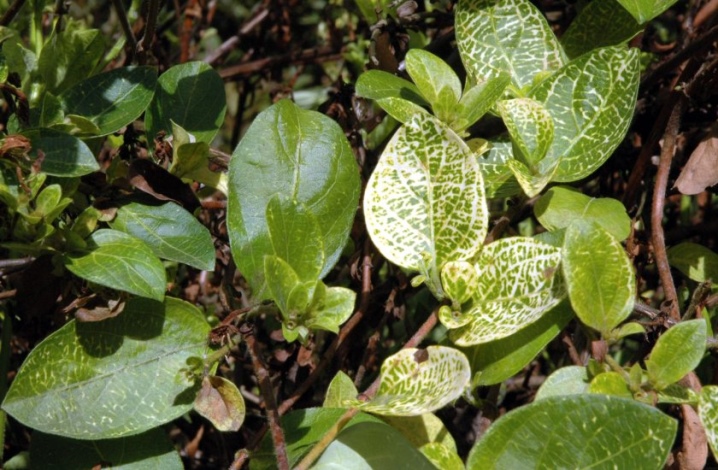
- Honeysuckle mite and aphids. Spraying "Aktellik", "Confidor" helps from the first insect. Infusion of garlic, tansy, celandine will save from aphids.
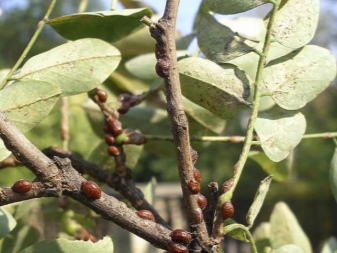
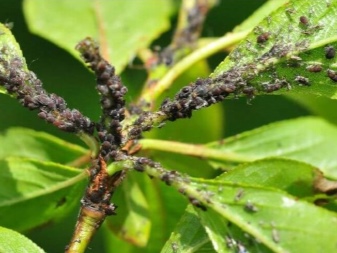
Use in landscape design
Brown's honeysuckle is distinguished by its intensive growth, aesthetic appearance, and a rather long flowering period. Therefore, it is actively used in landscaping and landscape design of gardens, parks, small areas. With it, you can create different types of compositions:
-
vertical gardening of the area with special supports;
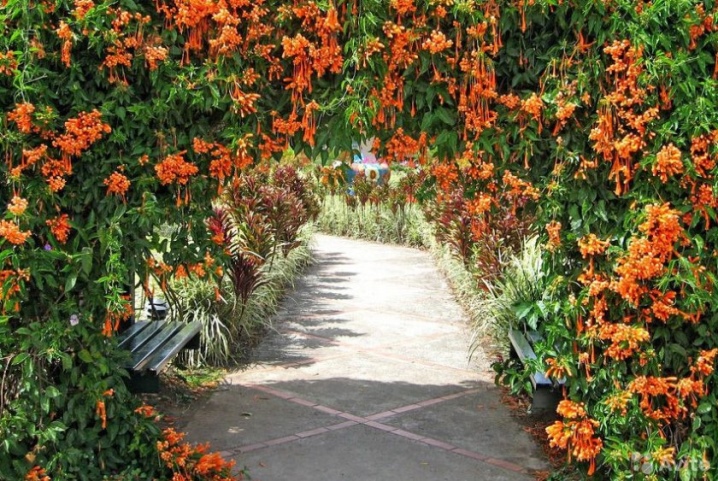
-
landing near facades, terraces, gazebos;
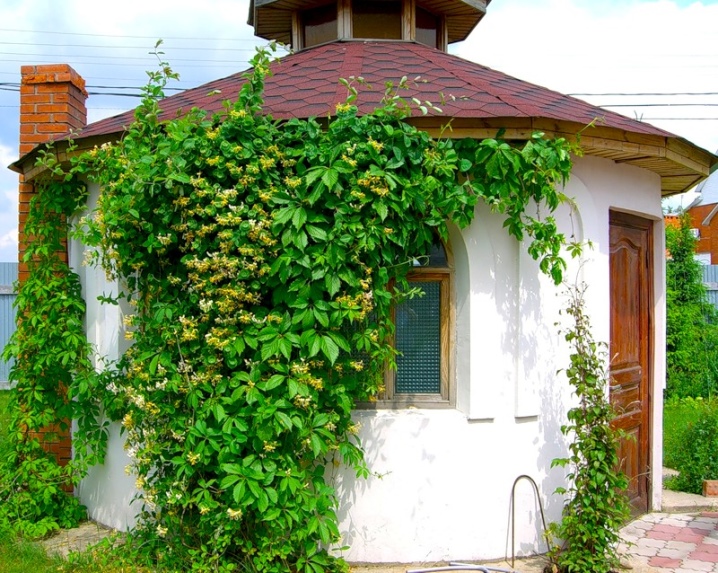
-
as an addition to floral ensembles;
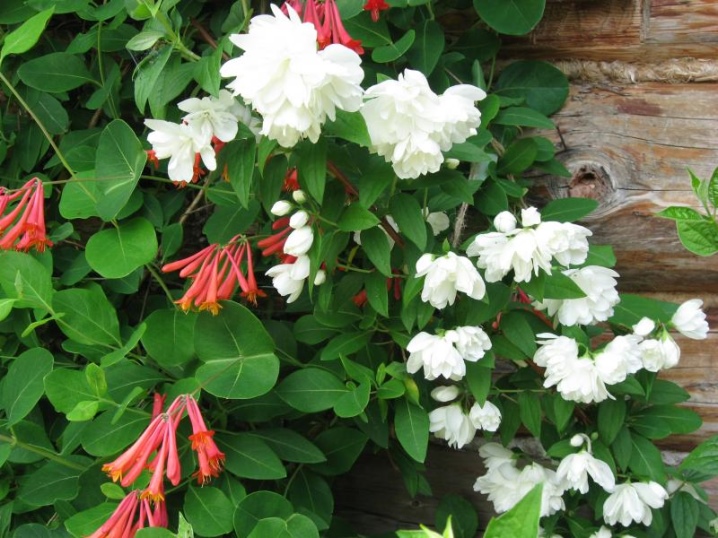
- as a hedge, for zoning the space of the site, trellis.
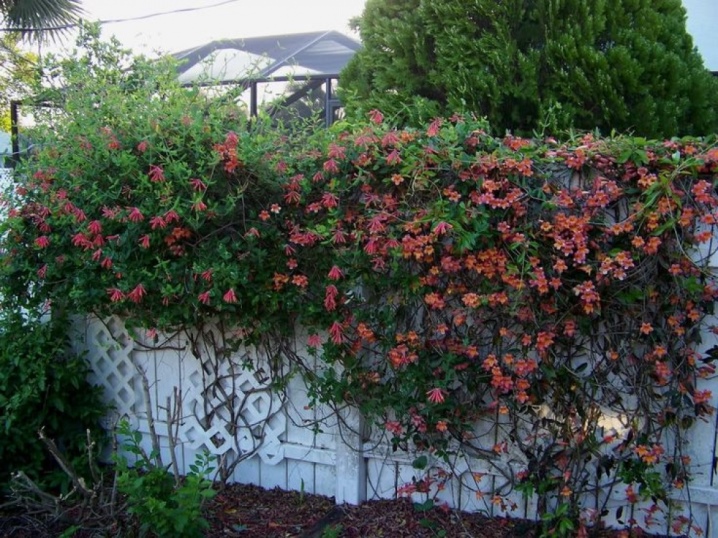










The comment was sent successfully.